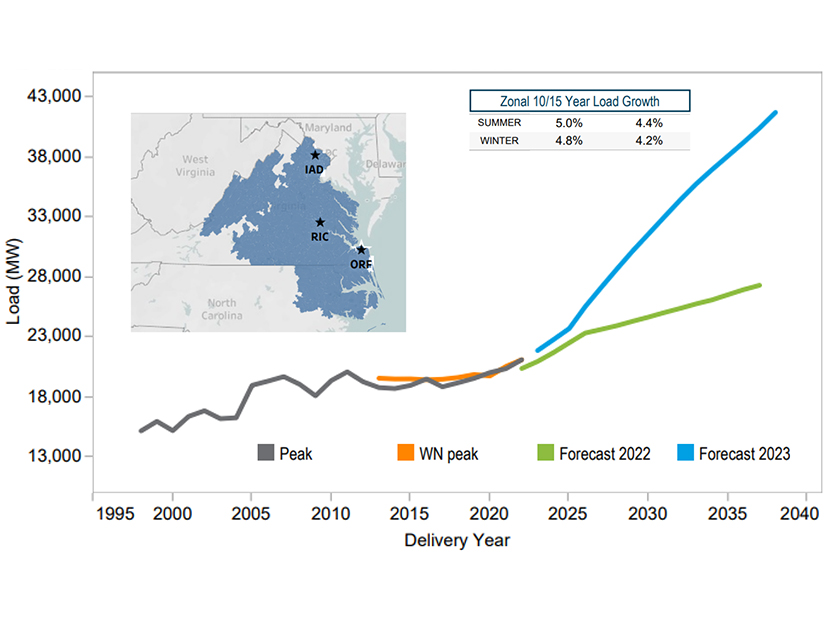
Stakeholders Endorse Changes to Generator Deliverability Test
VALLEY FORGE, Pa. — The Planning Committee endorsed by acclamation a PJM proposed slate of modifications to the generator deliverability tests to reflect the higher variability in dispatch as renewable resources continue to be added to the grid.
“We feel this set of changes is necessary to move in the right direction. It needs to be included in the planning process sooner rather than later,” said PJM’s Jonathan Kern.
The changes include merging the summer, winter and light load testing methods, redefining the light load period to reflect solar and wind output, and harmonizing the dispatch procedures. The proposal is intended to take a procedure that is fairly prescriptive and make it more reflective of the reality of what is being seen on the grid.
“We feel that this approach is going to provide a more realistic and conservative stress level than the existing procedure,” Kern said.
PJM will also be providing a software program that will allow for PJM’s results to be replicated by market participants. Kern said that is expected to roll out in the spring and should prevent the changes from causing additional work for transmission owners.
The proposal is set to go before the Markets and Reliability Committee on Jan. 25 for endorsement. If approved at that meeting, it could be implemented as part of the 2023 Regional Transmission Expansion Plan (RTEP).
Load Forecast for Northern Virginia Data Centers Continues to Climb
PJM is planning to open a third competitive window for the 2022 RTEP early next month to address “unprecedented growth” in data center load clustered around Dulles Airport in Fairfax County, Va. (See PJM Orders Dominion ‘Immediate Need’ Projects to Serve Load Jump in ‘Data Center Alley’)
During the Jan. 10 Transmission Expansion Advisory Committee meeting, Sami Abdulsalam, senior manager of transmission planning, said the region set a summer 2022 peak of 21,156 MW, exceeding the forecasted 20,424 MW. The 2023 load forecast is showing a significantly sharper trend through 2040 than the past two annual forecasts. It’s anticipated that Dominion will see 4.2% to 5% annual load growth for the next 10 to 15 years and could nearly double by 2040. While PJM is still able to maintain voltages in the area, Abdulsalam said it’s becoming increasingly difficult to schedule outages.
The data center growth extends to the north into FirstEnergy’s APS zone, which is expected to see its load grow from an 8,412-MW peak last year to 9,568 MW in the 2028 RTEP, based on the 2023 forecast.
Though the latest forecast goes out to 2040, Abdulsalam said the RTO is only making recommendations on work needed to meet the load growth expected through 2028, which PJM feels is a proper balance between the lead time needed for projects and the risk in forecasting.
Director of System Planning Dave Souder said the Load Analysis Subcommittee worked with data center developers and operators to develop the forecast, including by visiting the region where the development is occurring.
“We have had the ability to actually go down to the Dulles Airport area, and the amount of construction is amazing,” he said.
PJM Reviews Baseline Reliability Projects
PJM reviewed three proposed packages of baseline reliability projects to address violations found in the first window, second cluster of the 2022 RTEP: 26 thermal and 25 voltage flowgate violations in the APS, BGE, MetEd and PECO areas.
Abdulsalam told the TEAC Tuesday that the preferred Option 1 solution has a $154.29 million price tag, less than half the cost of the other two proposals.
Option 1 resolves all violations by making upgrades to existing facilities, whereas both alternatives include the construction of new infrastructure or major rebuilding of existing facilities. The most significant portions of Option 1 are the reconductoring of 27.3 miles of the Messick Road–Morgan 138-kV line and replacing equipment at the two substations at a $49.23 million cost.
Option 2 includes the rebuilding of the Hunterstown–Carroll 115/138-kV corridor as a double circuit 230-kV line and equipment at each substation to handle the higher voltage. At a $148.83 million cost, the work to that line would constitute nearly half of the proposal’s $332.85 million cost
With the highest cost, Option 3 includes constructing a new 500/230-kV station named Rice, tapping the existing Conemaugh–Hunterstown 500-kV line and building 29 miles of new double circuit 230-kV lines from the Ringgold substation to the new Rice substation. A second new 500/230-kV substation designated Furnace Run would be built off the Peach Bottom-TMI 500-kV line. Altogether the package would cost $389.78 million.

